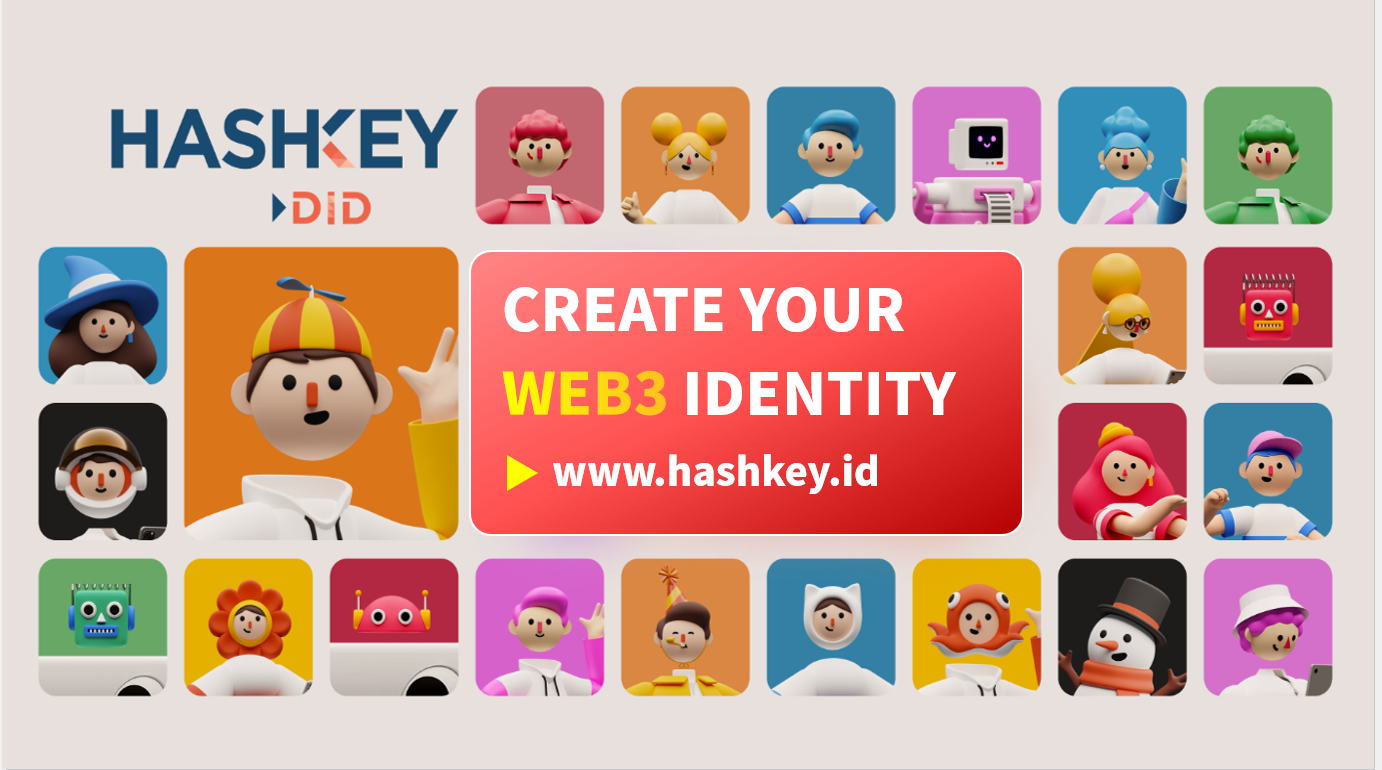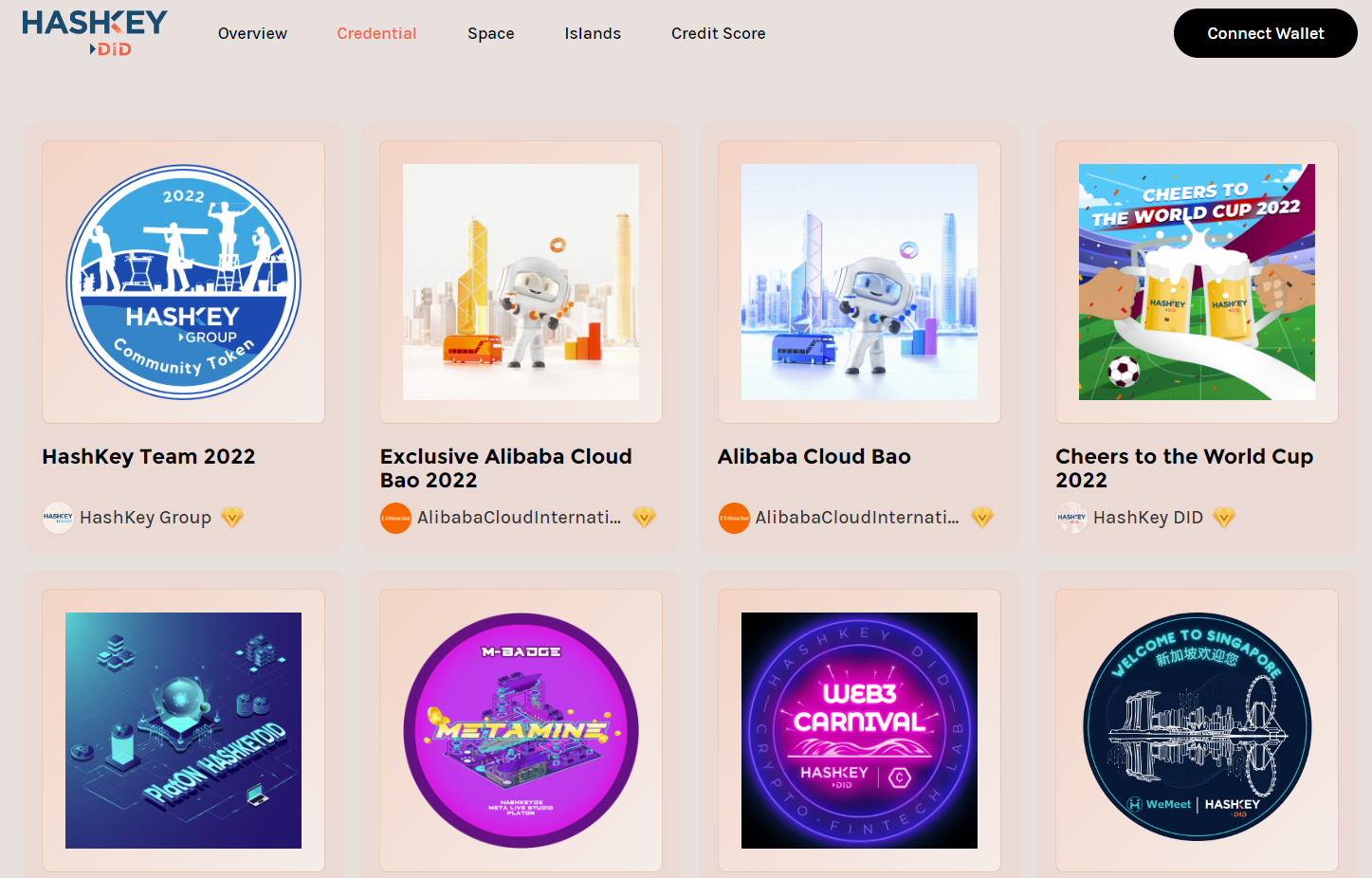HashKey DID and Decentralised Identifiers: The Key to Realising Web 3.0
HashKey DID and Decentralised Identifiers: The Key to Realising Web 3.0

Authors: Jason Li (HashKey Group), Wenxi Liang (HashQuark)
Evolution of the Internet
Web 1.0, Web 2.0, and Web 3.0 are commonly regarded as the three iterations of the Internet. The earliest stage of the World Wide Web, Web 1.0, is known as “the static web”, or the “read-only” web, where its end users were passive information receivers and did not offer interactive features. Websites were largely informational. Web 2.0, however, is a “read-write-only” web where interactive webpages exist, and users become content creators (user-generated content, or UGC) instead of information receivers. However, in essence, ownership of any personal data still belongs to these applications or the software company that owns them.
Now, we are slowly transitioning from Web 2.0 to Web 3.0.
The concept of Web 3.0, which is underpinned by public blockchains, was first put forward in 2014 by Dr. Gavin Wood, the co-founder of Ethereum, in his personal blog. According to Dr. Wood, protocols and technologies such as SMTP, FTP, HTTP(S), PHP, HTML, and Javascript form the foundations of today’s cloud applications, providing users with products and services in entertainment, content consumption, finance, and social networking. People realise the potential risks of entrusting personal information on the web to centralised entities, and Dr. Wood believes that most of these protocols and technologies will have to be redesigned based on our new understanding of the interaction between society and technology.
Dr. Wood has laid out his vision and goals: to build an internet, namely Web 3.0, that enables the free distribution of information and full ownership of users’ private information and data. Personal information is private by default, and is only disclosed upon the owner’s request. Communication can only be carried out through encrypted channels. The terminal exists under a pseudonymous identity and cannot be tracked.
The concept of a Web 3.0 proposed by the public blockchain community is defined by the following properties (also found on HashKey Group’s Blockchain Research No. 230, “The Web 3.0 Architecture Prototype and Web 3.0 Middleware):
1. Greater transparency: enabling of the publication, dissemination and access of censorship-resistant information
2. Trustless system: all participants can reach consensus on matters or decisions without needing to know or trust each other
3. High degree of autonomy: key decisions are made by decentralised autonomous organizations (DAOs), and tokens are given out to incentivise rational stakeholder behaviors
4. More secure: distributed storage to ensure data availability, cryptography-based information security, and privacy protection technologies
In summary, Web 3.0 is an iteration of the Internet underpinned by blockchain technology – thus it is considered more trustworthy and verifiable, and Web 3.0.0 users can have full control over their data and assets. Hence, Web 3.0 is “read-write-OWN”.
Decentralised vs. Centralised Identity
In the physical world, humans have unique biological traits that are unique to an individual, such as appearance, weight, age, skin colour and fingerprints. In order to better manage and record these personal data, centralised entities issue a unique identity certificate for each individual based on their biological attributes, which are used to prove that the individual has ownership over a certain asset or declare that the subject has certain social rights and interests. Organisations can use these certificates to identify individuals; for example, to track and determine who be held responsible for a crime, trace disputes. As the certificate and the individual’s identity are directly associated with each other, the identity certificate can be easily mapped to the subject. For example, a bank could determine the line of credit for a customer’s credit card in accordance with his or her ID card information. This specific identity system is controlled by a local government, which is “centralised” by definition.
Our identities also exist online in the world of Web 2.0, with most of these stored on Google and Facebook’s servers. All of our online activities can be linked through our social media accounts. However, unlike the real world, there is no mapping relationship between identity certificates and individual’s real identity, so users can opt to submit “applications” (i.e. create accounts) for an identity certificate using fabricated identity characteristics like gender and age.
Therefore, identity certificates on the Internet cannot be directly mapped to the individual. Anonymity and intractability affect real-world governance and security, and these online applications can disable accounts at any time without the user’s consent. These types of identity systems are also controlled fully by the centralised application, exposing the platforms to potential data breaches.
In addition, one of the huge drawbacks and criticisms of these centralised identity management systems is that user information is repeatedly collected by these platforms and stored on and shared with other applications. Users have no or very limited control over the information that essentially belongs to themselves.
Modern-day Internet and communications technology are so advanced and sophisticated that people have managed to build a digital world that mirrors the physical world. But appropriately and efficiently managing identities in the digital realm is the new conundrum we are now facing in the Web 3.0 era…
This is where DID, the blockchain-based Web 3.0 identity system, comes into play.
What are decentralised identifiers (DID)?
DID, short for decentralised identifier, is a verifiable and decentralised digital identity that can be stored on the blockchain and used across all applications in the Web 3.0 space. The information and data that exist on a user’s DID depends on the preference of that user. Compared with the traditional identifiers used by centralised entities such as Google and Facebook, DID is designed in a way where it is decoupled from centralised registries, identity providers, and government-controlled certificate authorities. To be more specific, DIDs enable its users to take back control over their personal data without requiring permission from any other parties. DIDs are essentially URLs that associate a DID subject/ individual with a DID document, allowing for trustable, secure and interactions associated with that subject.
DID records the data of a user’s on-chain behaviour on the blockchain – something that is immutable and cannot be falsified. In summary, DID is not only a key component of the Web 3.0 infrastructure, but it is also serves as the foundation of various DApps, governance, and other incentives in the decentralised space.
HashKey DID
HashKey DID is a multi-chain decentralised identity data aggregator powered by smart contracts, NFTs and privacy-protection decentralised protocol to provide identity services to Web 3.0 users.
Think of it as an amalgamation of a decentralised wallet, smart contract, decentralised storage, privacy computation.
HashKey DID, which uses PlatON’s privacy computing technology, adopts decentralised storage methods such as IPFS and Arweave, making it a completely decentralised multi-chain digital identity system. HashKey DID has already deployed smart contracts on various networks such as Ethereum, Klaytn and PlatON, and will further expand to Polygon, Polkadot, Aptos, zkSync, and other networks. In terms of wallets, DID currently supports imToken, MetaMask, Kaikas, Coinbase, Crypto.com, ATON as its front-end wallet entry options.
HashKey DID’s Product Suite
A non-transferable NFT + multi-signature smart contract is inherently the core technology of HashKey DID.
.key DID serves as the gateway for users to register, verify, authorise and sign on Web 3.0, and has begun to provide KYC verification services to users in some countries and regions to help users perform real-name identity authentication. HashKey DID does not store any users’ private information.
Credential allows users to store verifiable credentials (these can be identity certificates, proof-of-attendance protocols, authority descriptions or reports issued by third-party governments or other institutions etc.) The Credential function will help Web 3.0 projects understand its users’ or its community’s needs better, and to allow them to serve its existing users more efficiently, and potentially to attract and onboard new customers.
Islands is a credential-based tool kit tailored to empower the development of DAOs that are underpinned by DID technology. For example, users can create and chat in their own Discord channels by deploying Islands.

Space acts the personal dashboard of users and the starting point for users to interact with the web. Users can showcase their Web 3.0 achievements on Space, including collected NFTs, OST (On-chain Soul Token), a variation of Soulbound Tokens (SBTs), and other on-chain digital assets.
Credit Score is a digital credit rating system which can generate credit reports for users based on the user’s identity data through the typical credit scoring model.
As a part of the Web 3.0 infrastructure, HashKey DID is now working on building HashKey DID DAO, gathering blockchain and Web3 afficionados with the common goal to improve the user experience of decentralised identifiers altogether.



